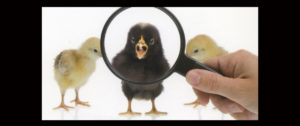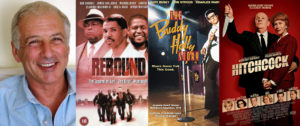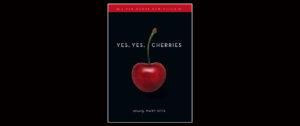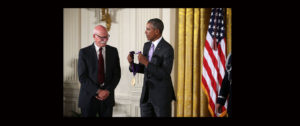Terranauts to Psychonauts.
I give it Five Stars.
Outside Looking In, T.C. Boyle’s seventeenth novel, can be read as a stand-alone work of exceptional literary fiction. In another dimension—a useful term because of the mind-altering thematic references to LSD consumed by the principal characters, including Timothy Leary—this new novel can also be understood in the context of other T.C. Boyle novels, including his biographical novels about men he refers to as great megalomaniacs of the twentieth century, including The Women (Frank Lloyd Wright), The Inner Circle (Alfred Kinsey), and The Road to Wellville (John Harvey Kellogg).
But while a reader can gain an enhanced appreciation of Outside Looking In by considering it in the context of T.C. Boyle’s oeuvre, it should be distinguished from the tome of his earlier biographical novels that are painted on a larger canvas, providing a wider angle of view. The more telescopic angle of view of Outside Looking In emphasizes a new theme that distinguishes it from The Inner Circle or The Women, for example.
Used as an adjective, “novel” means original or striking in conception or style: strange, unusual. More simply stated, novel means something new, and creating something new with each of his successive novels, something different from what came before, is something that T.C. Boyle does. Thus while it can be said that The Women is about Frank Lloyd Wright and The Inner Circle is about Alfred Kinsey, it cannot properly be said of Outside Looking In that it is about Timothy Leary. Instead, because Outside Looking In focuses primarily on its point-of-view characters rather than on its historical figure, a theme of the perils to ordinary people of addiction, of drug abuse, of extreme obsessive behavior organically emerges.
One way of looking at this is to ask, what is it about the life of Timothy Leary that indicates he was a great man? Wright has left us the Guggenheim Museum and hundreds of other architectural works of art, an architectural style that endures. Kinsey advanced entomology, especially our understanding of the gall wasp, but more significantly, his research heralded important sociological and medical advancements in the understanding of human sexual behavior.
Leary began his research into hallucinogenic compounds to prove whether they could be beneficial psychotropic drugs. But with self-experimentation combined with his character traits of prevarication and shameless self-promotion, it is likely that he singlehandedly set back the prospect of discovering psychiatric uses for hallucinogenics for three or four generations at least. Tim Leary was no Frank Lloyd Wright, no Alfred Kinsey. He has left us with not much more than a cautionary tale.
Great nonfiction is about facts. Great fiction is about truth: enlightenment, revelation of universalities. Facts don’t change opinions much. Consider the imperceptible dent that the redacted Mueller Report has made on the popularity of Donald Trump. But the best fiction can and often does change opinions. Sometimes because the novel is an unabashed polemic. John Steinbeck’s The Grapes of Wrath and Sinclair Lewis’s The Jungle come readily to mind. But it is a neat feat when a great novel doesn’t pursue an agenda while still illuminating critical social issues. The Tortilla Curtain is a fine example of this. No novel authored by T.C. Boyle that I’ve read is a polemic. Yet each of them raises consciousness of critical issues of our times or of times past. Without question, this includes, as we shall see, Outside Looking In.
The Grapes of Wrath punctuates its agenda of decrying economic oppression in its sweeping stories of the dust bowl, of the Joads’ and other Okie’s 1930’s migration west, of corporate greed. Lewis makes no effort to disguise his political agenda in The Jungle, telling a story about the state of the meat-packing industry, of the public health crisis engendered by that industry, of inhumanity and corporate greed. To follow in the footsteps of these great novels, Outside Looking In could have told stories of extremism in the sex-drugs-and-rock ’n’ roll revolution, but it does not. Ken Kesey and his merry pranksters do make a cameo appearance, as if to underscore what Outside Looking In is not about, a refraction from the frivolous to focus on the global importance what this novel shows.
Outside Looking In is about Fitz and Joanie Loney and their teenage son Corey in the years 1962 to 1964 when LSD was legal. The novel doesn’t say whether LSD is good or bad, doesn’t say whether Timothy Leary and Richard Alpert were good guys or bad, though the it certainly asks those questions.
The novel is quadfurcated: a prelude followed by Parts I, II, and III. The prelude imagines the 1943 experience of Dr. Albert Hoffman, the chemist at Sandoz, a Swiss pharmaceutical company, when he experiments on himself and his lab assistant by ingesting his recently discovered compound lysergic acid diethylamide 25. The first words of the Prelude are: “Was it poison?” The rollercoaster of a story that follows addresses that question within the context of a larger question.
Part I is told from the point of view of Fitz. It is 1962 and the Loney family is encamped in an adequate if cramped apartment in Cambridge. Fitz is a first-year grad student in psychology at Harvard. Joanie holds down a mind-numbing job minding the card catalog at a local library, working grueling hours. The family needs her minimum-wage earnings to survive, if Fitz is to earn a doctorate from Harvard.
This is a typical setting of a story of those times as exemplified in Richard Yates’s Revolution Road. In Outside Looking In we see the wife, Joanie, sacrificing her own need for intellectual and professional growth to support her husband, Fitz, who is pursuing an advanced degree.
But there is one thing that is far from nineteen-fifties early-sixties typical in the story of this marriage. Fitz’s graduate advisor at Harvard is Dr. Timothy Leary, who along with Dr. Richard Alpert leads the Harvard Psilocybin Project. At a gathering of graduate students and their wives at Leary’s home early in Fitz’s first semester, Fitz and Joanie discover that they’re expected to take the sacrament, a dose of psilocybin, as an initiation into the Leary-Alpert inner circle. After coming on, Fitz and Joanie slip away from the others, find an empty bedroom, meld into an experience of oneness with the other, discovering that there is more to sex than the thirty-second missionary-position 2.3-times-a-week routine that had been their sex life. Yet despite this awesome, mutual life-changing experience, ultimately Fitz and Joanie’s character arcs dramatically diverge.
Part I refers to Leary’s psilocybin experiments with prisoners and fictively recounts the famous psilocybin-Easter-Day-divinity-student experiment. As the story and the year progress, psilocybin is replaced by LSD as the sacramental drug and the earnestness of scientific inquiry into possible beneficial uses of hallucinogenics fades. At the end of Part I, the Loneys are on a road trip to Zihuantanejo, Mexico, where the inner circle will carry out LSD experiments on themselves—strictly for the sake of academic research, of course—at an on-the-beach resort.
Part II is told from Joanie’s point of view. Remarkably this isn’t simply a change of perspective from one character to another. In Part II, especially while the Loneys are in Mexico, Fitz largely disappears from the page, from Joanie’s consciousness. Neither Fitz nor their marriage are much on Joanie’s mind. Toward the end of Part II, we learn that while in Mexico, under the influence of LSD, of course, Joanie has been unfaithful to Fitz for the first, but far from the last time. She presumes that he’s slept with other women during their first summer in Zihuantanejo and afterward. But the Loneys don’t talk about it. Not until much later, not until it’s too late to save their marriage.
When the couple returns from Mexico, Harvard has severed its ties to Leary and Alpert; the psilocybin project has been terminated. This is where Joanie’s subjugation as the wife becomes clearer, more painful to witness, the oppression of her marriage and the menial work that will be hers weighs upon her until it almost becomes unbearable. The great weight of this oppression is lifted when the Loneys learn that Leary has procured a mansion in Millbrook for the inner circle to reside and Fitz takes a leave of absence from Harvard. Corey is older, of course, and probably sexually active. And what does this mean for Joanie? That she is, “Free. Free to look after her own needs for a change.”
In Part III, in Millbrook in 1964, back in Fitz’s point of view, we observe Joanie and Fitz ever more rapidly moving apart. The Loneys and the other members of the inner circle are taking increasingly greater doses of LSD. But we see something else at this juncture, something astonishing, something that must be saying, at least in part, what Outside Looking In is about.
From the outset we see that members of the inner circle are heavy drinkers. At Leary’s place there is always a pitcher of martinis being passed around. Later there is a fair amount of smoking pot. But even among the others in the hard-drinking inner circle, in Part III we see Fitz’s drinking increasing at alarming rates. In fact, when he’s not tripping or sleeping, we don’t see him without a frequently refilled glass of hard liquor in his hand.
Joanie, her mind expanded sociologically, psychologically more than psychedelically, leaves Millbrook with Corey at the end of the school year, hoping Fitz will come to his senses, will come home. She has learned about herself, about what life can be from LSD, from her life-altering experiences in the inner circle. But Fitz is too far gone to have learned anything. He has, in effect, disappeared. The Fitz of Part I is no more. The largely absent Fitz of Part II is no more. The Joanie of Parts I, II, and III has evolved.
So is LSD poison? For Fitz Loney, at least in combination with close-to deadly quantities of alcohol, the answer is unequivocally yes. But for Joanie? For her LSD experiences together with her life in the inner circle, the answer is no, that it has contributed ultimately to her liberation. She is free. Free at last. Though at great cost, including the loss of her marriage, her son’s loss of his father.
Turning now to consider Outside Looking In in the context of Dr. Boyle’s oeuvre, I note that Dr. Boyle’s previously most recently published novel was The Terranauts in 2016. That book imagines a year in the life of scientists sealed in the biosphere in Arizona. On page 250 of Outside Looking In, Charlie, a member of the inner circle, observes that outsiders who join them for trips won’t be astronauts, they’ll be psychonauts. The frequent reference to the “inner circle” in Outside Looking In alludes to Dr. Boyle’s novel centered on the life and work of Alfred Kinsey, The Inner Circle. The reference to psychonauts alludes to The Terranauts. These word choices raise the question, how does Outside Looking In mesh with Dr. Boyle’s oeuvre?
Examining this question, I ask should the inner circle and others who are tripping be referred to as psychenauts or psychonauts? The word “Psychology” derives from the Greek root psyche meaning the soul or perhaps spirit or mind. The root “ology” means knowledge or study. My dilemma is with the root word “psycho,” meaning insane or suffering from a mental disorder. “Naut” comes from the Greek word meaning sailor or perhaps traveler. So psychonauts would loosely mean insane or perhaps temporarily out-of-their mind travelers, which fits Leary’s inner circle while on acid. Psychenaut would mean a spiritual traveler or perhaps a traveling soul. Which is more apt? Perhaps the members of the inner circle began as psychenauts but became psychonauts? Perhaps Joanie was a psychenaut while Fitz was a psychonaut.
Outside Looking In is painted on a much smaller canvas than The Inner Circle or The Women, perhaps for good reason as Leary is a dimmer light than Kinsey or Wright. The narrower field of view resulting from the smaller canvas enables the novel to be a richer, a more psychologically complex portrait of the Loneys and the effects of LSD than it would have been had it also been about Leary. The Women and The Inner Circle present deep, satisfying portraits of Wright and Kinsey, portraying them I would say in unfavorable light. While the light shined on Leary is also not so favorable, Outside Looking In is not a portrait of his life.
So what is it that Outside Looking In clarifies that what would have been obfuscated had the novel been about the life of Timothy Leary after 1964? The reader isn’t left with the question: what exactly was the genius of Timothy Leary? What did he accomplish? What is his legacy? Readers are not left pondering these questions, as readers of The Women are left marveling about the life of Wright or readers of The Inner Circle are left with amazement reflecting on the life of Kinsey.
What readers of Outside Looking In are left with is a keen awareness of the consequence of addiction, whether to alcohol, to LSD, to opioids. And what could be more topical in these times of the out-of-control tragedy of the plague of opioid addiction? And we can also ask, what could have been the legacy of Tim Leary, a brilliant, accomplished psychologist when he arrived at Harvard, had he not indulged in ingesting excessive doses of LSD?










































James, just based on the first paragraphs of your review, I downloaded the Audible version of the book. Now that I’ve heard the book, I love the book as much as you do. I also read your review again, and I love how you place “Outside Looking In” in context with Boyle’s other works. I once taught “The Tortilla Curtain” to college students, but I have not read the other novels you mention, which also look interesting. Thanks for such an in-depth review.
Chris, thanks for the feedback. I’ve heard T. C. Boyle say at Q&As after a reading that his favorite novel among those he’s authored in WATER MUSIC. About twelve or thirteen years ago I once asked him which of his books he’d recommend for me to read next and he said WORLD’S END. I promptly read it and since that time it’s been one of my favorite novels of all time.